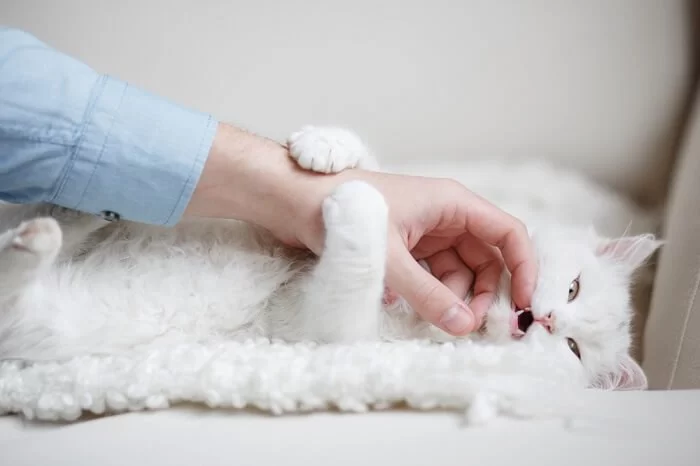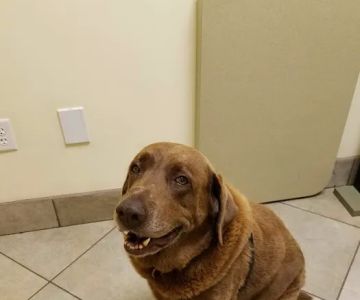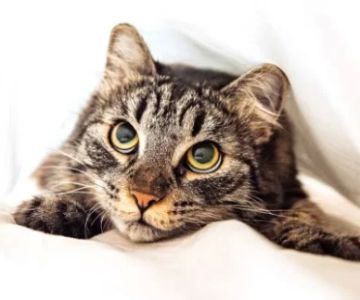- 1 - Understanding the Behavior of Targeted Grooming
- 2 - Common Medical Reasons for Biting or Licking One Spot
- 3 - Behavioral and Stress-Related Triggers
- 4 - Skin Irritations and Allergic Reactions
- 5 - When to Seek Veterinary Help
- 6 - Prevention and Long-Term Care Strategies
1 - Understanding the Behavior of Targeted Grooming
When a cat is biting or licking one specific area, it’s often more than just regular grooming. Cats are meticulous about their hygiene, but focused attention on a single spot can indicate irritation, discomfort, or even pain. In many cases, pet owners notice small bald patches or reddened skin in the targeted area. Observing your cat’s body language and noting when and where this behavior occurs can help you determine whether it’s a temporary quirk or a sign of a deeper issue. For example, one Maine Coon owner reported their cat constantly licking the base of its tail, which was later traced to flea allergy dermatitis.
2 - Common Medical Reasons for Biting or Licking One Spot
Medical conditions are a leading cause of a cat’s obsessive focus on one spot. Common culprits include external parasites like fleas and mites, fungal infections such as ringworm, or localized injuries. Some cats may also develop hot spots—painful, inflamed skin patches—due to allergies or infections. A veterinary exam can help identify underlying health problems through skin scrapings, blood work, or allergy testing. Timely treatment is crucial, as untreated skin issues can quickly escalate and lead to open wounds or secondary bacterial infections.
3 - Behavioral and Stress-Related Triggers
Not all cases are medical. Cats can also develop behavioral issues that lead to overgrooming, a condition known as psychogenic alopecia. Stressors such as moving to a new home, introducing a new pet, or even rearranging furniture can trigger this compulsive behavior. Much like humans who bite their nails under stress, cats may lick one area repeatedly as a self-soothing mechanism. In one case, an indoor-only cat began licking its foreleg raw after its owners adopted a second cat, showing how environmental changes can influence grooming habits.
4 - Skin Irritations and Allergic Reactions
Allergies are a common reason cats target one spot. Food sensitivities, flea saliva, pollen, and household chemicals can cause intense itching in specific areas. For example, a cat allergic to chicken protein might develop redness and hair loss around its neck after meals. Skin irritation can also result from contact with certain fabrics or cleaning agents. Identifying and removing the allergen—along with veterinary-prescribed anti-itch treatments—often brings quick relief. Using gentle, pet-safe cleaning products and hypoallergenic diets can help minimize flare-ups.
5 - When to Seek Veterinary Help
If your cat’s biting or licking one specific area persists for more than a few days, or if you notice swelling, bleeding, or hair loss, it’s time to consult a veterinarian. Chronic irritation can cause lasting skin damage and discomfort. Veterinarians can perform diagnostic tests to pinpoint the cause and recommend treatments such as medicated shampoos, antibiotics, antifungals, or behavioral therapy. Hidden Brook Veterinary often sees cases where prompt medical intervention prevents a minor irritation from turning into a serious skin infection.
6 - Prevention and Long-Term Care Strategies
Preventing your cat from biting or licking one spot starts with regular health checks, flea prevention, and a stable environment. Providing mental stimulation through toys, scratching posts, and interactive playtime can help reduce stress-related overgrooming. For allergy-prone cats, a consistent diet and avoidance of known triggers are essential. In some cases, wearing a soft recovery collar temporarily can give the skin time to heal. Long-term management often involves both medical care and environmental adjustments to ensure your cat remains comfortable and itch-free.











